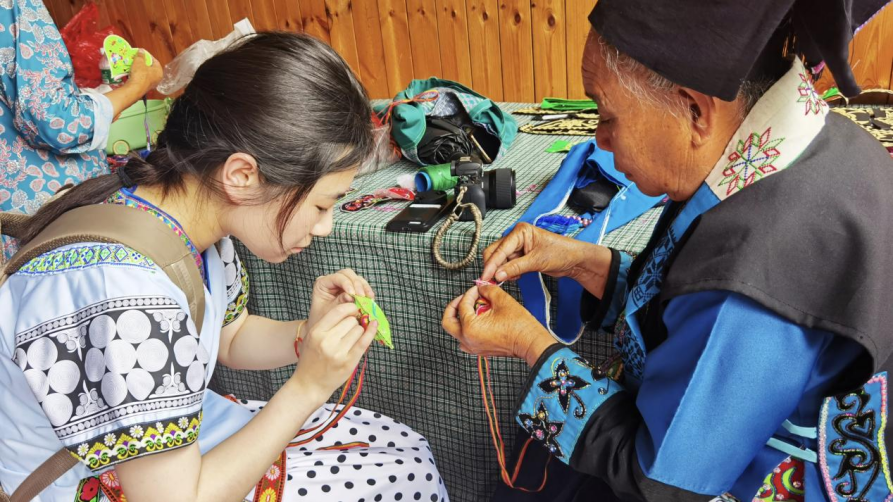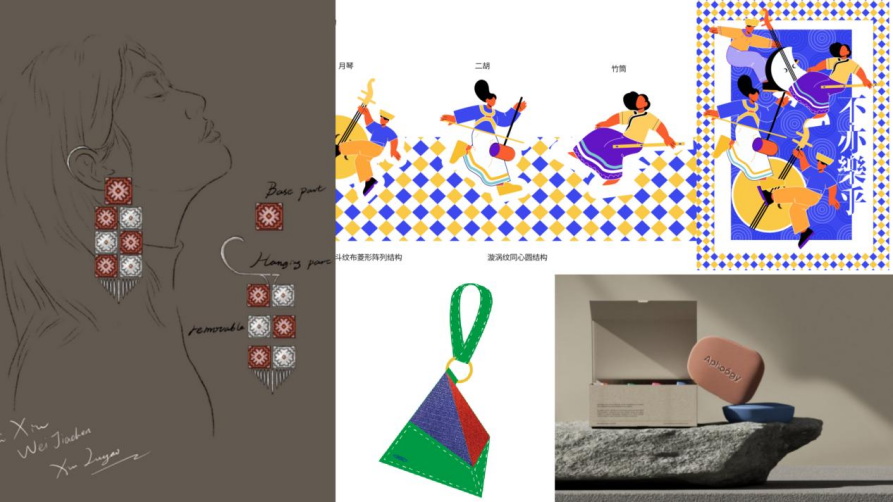Recently, a group of 19 students and faculty from the “Cultural Tourism and ICH Innovation Design Workshop” of College of Fashion and Design embarked on a seven-day field research and social practice trip to Liuzhi Special District in Liupanshui City, Guizhou Province, focusing on intangible cultural heritage (ICH).
The team visited several heritage sites including Meisuoni ICH Cultural Development Company in Luobie Township and Axiu Bouyei Ethnic Clothing Workshop in Moon River Village, as well as Liuzhi Special District Third Line Museum and the Luobie Folk Museum. Focusing on the practical needs of ICH innovation, the group leveraged local clothing and culinary cultures to create a series of creative works. These initiatives, ranging from minority ethnic IP development, agricultural product packaging enhancements, to cultural and creative souvenir design, aim to empower the innovative transmission of ICH and support the upgrade of the regional cultural tourism industry.
In recent years, as one of the initial implementers of the “Chinese ICH Inheritors Training Program”, College of Fashion and Design has utilized multidisciplinary resources and the support of Donghua University’s ICH Education and Research Center to foster talent development and social service. The college has integrated fashion elements into traditional dyeing and embroidery, promoting the protection and transmission of Chinese clothing-related ICH. Since 2016, it has hosted ten sessions of the “Traditional Embroidery Creative Design” workshop, training over 300 ICH practitioners and inheritors nationwide through a collaborative model pairing inheritors with domestic and international students. Looking ahead, College of Fashion and Design plans to focus on ICH-related social practice activities, integrating ICH into classroom teaching, social practice, innovation, entrepreneurship, and campus culture development. This approach aims to effectively synergize cultural transmission with student development and achievement.

(Students experiencing the making of Bouyei ethnic sachets on-site)

(A display of some creative works designed by the students)


